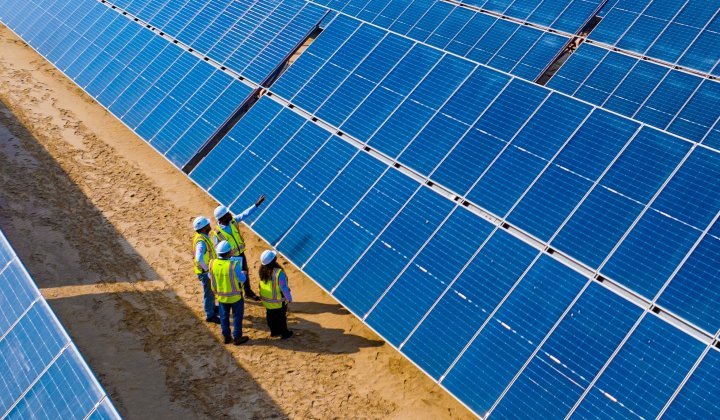If Eskom’s inability to provide a constant supply of electricity is not convincing businesses to seriously consider investing in solar power, their diesel bills certainly are.
The cost of loadshedding has been enormous. Retailer group Spar says it spent R700 million on diesel for the six months to end-March 2023. There is a similar story with rival Pick n Pay, which has seen its diesel bills reach R500 million for the year to end-February 2023.
The increase in the frequency and duration of the rolling blackouts in 2022 and 2023 has seen businesses reluctantly accept there will be no quick end to the crisis and that they must see to their own power needs.
However, the South African energy market is liberalising fast, which is opening opportunities for businesses looking to self-provide electricity.
The scale of their fuel bills has become a tipping point for many when it comes to deciding whether to invest in photovoltaic (PV) solar power generation, says Duane Newman, a partner at EY South Africa partner.
A combination of solar power generation and batteries would ensure a supply of electricity, but this is difficult decision because the capital cost of investment is enormous.
For example, it’s costing property group Growthpoint Properties R50 million to pilot a 4.5 megawatt (MW) solar battery system at Paarl Mall in the Western Cape.
Businesses must work out the cost of not having a constant supply of electricity, versus the cost of using a diesel generator. But with the cost of diesel mounting, they must measure this growing expense against the large upfront cost of investing in solar power.
From crisis to opportunity
Although the magnitude of the electricity crisis is putting investment in solar firmly on the table, changes in the power market — such as allowing businesses to sell electricity into municipal grids and tax incentives — mean it should not necessarily be viewed as a grudge purchase.
Changes to the section 12B tax incentive under the Income Tax Act mean that when a business invests in solar PV panels it can claim a 125% deduction on a project that generates less than 1MW. This means an investment of R1 million would qualify for a deduction of R1.25 million against taxable income.
When it comes to feed-in tariffs — the fee a municipality pays residences and businesses for solar energy — they can get 78.98c/kilowatt-hour (kWh). The City of Cape Town is also paying an additional 25c/kWh as an incentive.
Rather than being seen as a grudge buy, changes to the energy market could see PV solar go from a way to securing electricity supply to even generating revenue.
A liberalised energy market, allowing businesses to trade electricity across municipal and Eskom’s grids, will arrive a lot quicker than most think, says LTM Energy Group CEO Dhevan Pillay.
“I think in two years we will be talking about energy trading as the norm.”
This means instead of just having solar catering just for their own needs, businesses will soon be selling electricity (at below the Eskom rate) to other businesses.
South Africa is quite far advanced in terms of liberalisation, says Pillay. Already changes are being made to the country’s power infrastructure that will allow it to become an open market.
South Africa’s energy grid was originally designed to send electricity in one direction, from a single provider to multiple users. But now, through a process known as wheeling, electricity is being sent from several providers to specific end users.
Mobile operator Vodacom is running a “virtual wheeling” pilot project in partnership with Eskom that will enable it to power its towers from privately generated electricity, and the City of Cape Town launched its wheeling pilot in June 2023, which will see 15 companies participate.
Businesses are also set to gain by Eskom paying them to reduce their electricity usage. The power utility’s demand-side energy management programme will pay out R3 million for every megawatt saved and pay 42c for every kilowatt-hour saved.
Another revenue stream businesses can tap into is the generation and sale of carbon credits. Pillay says though the price for these commodities is low, his company, LTM Energy, has sold them abroad.
He foresees businesses deciding to “go green” and coming up with new revenue streams like selling the solar power they produce.
Alternatively, businesses can outsource their renewable efforts to a company like LTM Energy, which will set up the projects at its cost – LTM Energy will own the assets – in exchange for selling electricity to the business at a lower unit price than what they can buy it from a municipality or Eskom.
Small-scale utility? Maybe
Though the stars are aligning when it comes to investing in solar, it does not mean the business case for companies looking to generate revenue from it is problem-free or that it’s a practice suited to every business.
The feed-in tariff is probably the biggest issue when it comes to on-selling electricity. Pillay says this tariff is based on the premise that excess solar power is being sold into the grid. This means that to sell electricity into the grid, the system must have excess power generation built into it.
For a business, this is a difficult decision as it requires it to make an investment in solar that supersedes its own needs.
The problem in developing a PV solar system around this premise is that the feed-in tariff needs to be at least 25% to 30% lower than the municipal electricity charge tariff to justify the investment, Pillay says.
In his view, the current prescribed feed-in tariff is too low to justify this kind of investment.
There are also additional costs involved. A new meter to measure the cost of electricity going into the grid must be fitted at a cost of R13 000.
EY’s Newman points out that the benefits of the section 12B tax incentive are also limited, as it excludes inverters and batteries – which are much more expensive than the panels.
The section 12B incentive is also limited in its timeframe, as it only runs to 29 February 2024.
New mindset
Despite the hurdles, a liberalised energy market is well on its way, creating new opportunities for businesses looking for new revenue streams or looking to cut costs.
But when it comes to investing in renewable energy, Pillay says businesses should not treat it as a once-off project, which provides energy security, but rather see “going green” as a business philosophy.
He gives an example of how one of his clients installed PV solar, reducing its electricity consumption by 35%, resulting in a 60% reduction in its electricity bill. It also turned its organic waste from its canteens and turned it into compost and reduced its water consumption by 80%.
“You are saving on operational costs because you are reducing your bills. Embracing green energy makes perfect sense.”
CASE STUDY
Balwin Energy's discounted power
Balwin Properties is best known for its high-density housing projects. But what does not get much attention is its “annuity” businesses such as its fibre service, Balwin Fibre, and its bond origination business, Balwin Mortgages.
Though the group’s newest annuity business, Balwin Energy, has only made a small contribution to its profitability, it is playing a key part in its energy strategy, which is to sell electricity to unit owners at a discounted rate.
Correctly operated PV systems produce power at a cheaper rate than the utility, notes Balwin Energy managing director Matthew Whalley.
“The business model here is that by including solar energy in the supply to the development the municipal bill is reduced. This means that less needs to be collected from residents to settle the bill and as a result, a discount can be given to residents on all their electricity.”
This has seen its clients get a 10% saving on their electricity tariff.
Balwin Energy operates in nine of the group’s sites, where it generated 3.3GWh of energy during the year, through more than 9 000 solar panels.
Though the group is open to selling into feed-in power markets and to the possibility of selling carbon offset credits, its primary goal is to ensure the residents of its estates receive discounted electricity.
This mandate also means that Balwin Energy’s operations are not designed to offset load-shedding.
He says PV panels can produce power and thus reduce the cost of electricity, by providing a price security for its clients, but they can only operate if there is already a live grid. This means solar panels do not produce power during load-shedding, unless there is an additional source of energy, like a battery or generator.
Whalley says this addition does not come cheap.
“These energy sources are substantially more expensive, either in terms of capital or operations, than pure PV.”
Though Balwin Energy has piloted batteries or generators on some of its developments, “the goal is to provide energy security to clients, not to derive a financial benefit.”
KEY TAKEAWAYS
- Businesses can mitigate the cost of load-shedding by selling excess electricity into the grid, using the tax incentive on PV panels, and having Eskom pay them to use less electricity.
- The electricity market is liberalising at a quick pace. Within the next two years, businesses will be able to buy electricity directly from a private provider.
- A business can either spend on installing PV solar themselves or they can outsource it to a third party, which would bear the cost in exchange for selling electricity to the business at a lower rate.
- The prescribed feed-in rate to the grid is seen as too low, and the tax incentive does not extend to batteries and inverters. The incentive also ends on 28 February 2024.
- It’s best not to treat a renewable energy investment as a once-off project, which provides energy security, but rather see "going green" as a business philosophy.




